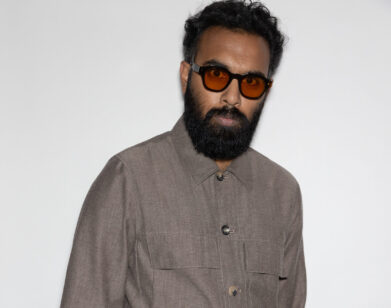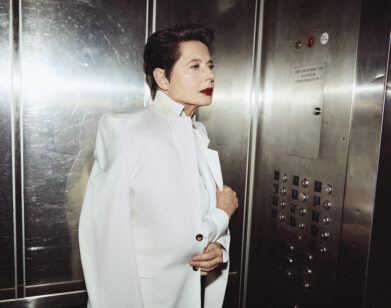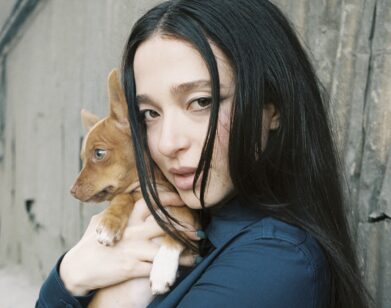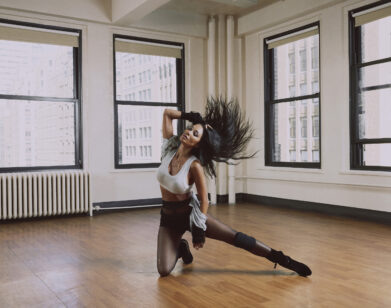Jeff Nichols’ Southern Exposures
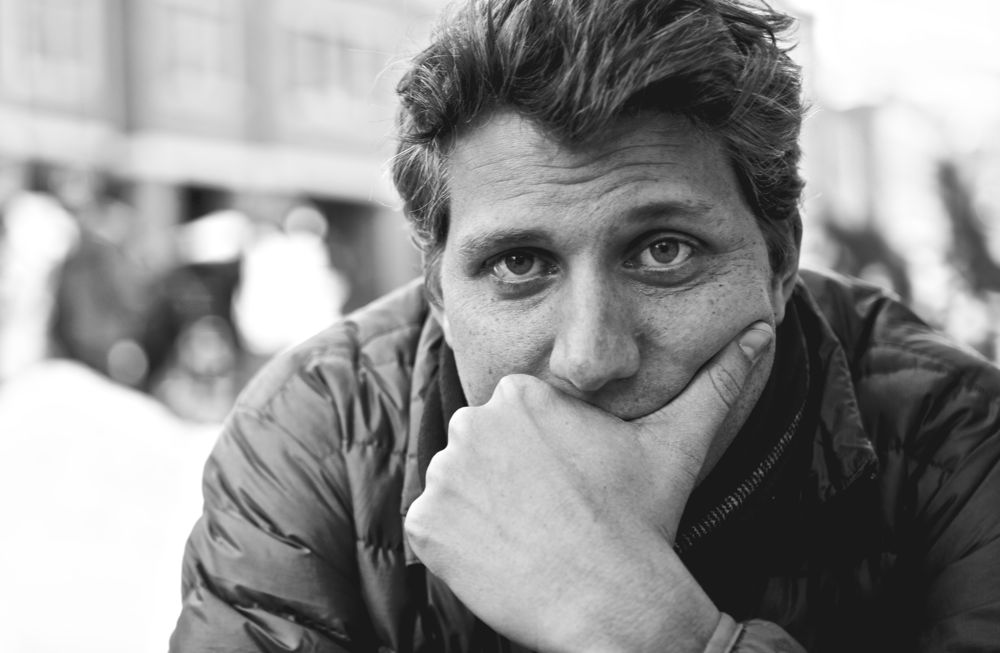
ABOVE: JEFF NICHOLS AT SUNDANCE, JANUARY 2013. PHOTO BY FRANK SUN.
Jeff Nichols‘ first film, Shotgun Stories (2007), is sparse and dark—the story of three brothers from Arkansas, Son (played by Michael Shannon), Boy, and Kid, embroiled in a futile feud with their half siblings. His second film, Take Shelter (2011), is not so different. A man (again played by Michael Shannon) struggles with his sanity and his duties as a patriarch. He must protect his wife (Jessica Chastain) and child from his apocalyptic visions. There are more special effects and an added end-of-the-world subgenre, but the tone is the same: a pervading, inescapable despair.
Nichols’ third film, Mud (2012), is something else entirely. Michael Shannon is still present, but in a minor role. Like Shotgun, the film takes place in Nichols’ home state of Arkansas, but rich, green forests and the Arkansas River replace Shotgun‘s dusty crop fields. The star power is bumped up a few notches; Chastain and Shannon might be famous now, but Take Shelter helped make them so. In Mud, Nichols relies on the established, although newly credible, Matthew McConaughey in the titular role and Reese Witherspoon as his childhood crush. Most of all, however, there is a levity in the protagonists (two pre-teen boys, Ellis and Neckbone) and the Mark Twain, coming-of-age plotline (they discover a fugitive hiding on an island).
Mud is making the festival rounds: Cannes, Sundance, and now SXSW. Interview met Nichols at Sundance to discuss the South, snakes, and meeting Michael Shannon.
EMMA BROWN: I know you’re from Arkansas. Did you grow up alongside a river?
JEFF NICHOLS: Yes and no. I grew up in the suburbs, so not technically. There is a river that runs through the middle of Little Rock, the town I grew up in. It’s the Arkansas River, and it does actually connect to the very place that we shot the movie. But, oddly enough, the majority of places that I saw growing up were more like my first film Shotgun Stories—flat, delta farmland. I really had to kind of discover this place. There was a part of my home state that I wasn’t super familiar with. I have a different association with it; more of a sense of discovery, I suppose.
BROWN: I heard that you had wanted to make Mud before Take Shelter, but weren’t able to. Is that true?
NICHOLS: No, I had both. I wrote Mud and Take Shelter in the same summer.
BROWN: Oh, really? Very productive.
NICHOLS: Yeah, it was a good year. And it was interesting, because I was really indulging two sides of my personality. Certainly, Take Shelter represented the very serious, very anxious side of me. Mud was a depository for a little more nostalgia and just a different kind of feeling, a different kind of mood. Something that’s not so dark. Something that does actually have a happy ending and is a little more hopeful. I had both scripts and I remember sending them both to Mike Shannon to read, just as a friend, after Shotgun Stories. I said, “I’m gonna make Take Shelter next, because Mud is too big.” He was like, “What? That doesn’t make any sense. Take Shelter has got floating furniture and birds and stuff.” And I was like, “Yeah, that’s easier to do production-wise than a boat in a tree or having boys out on a river.” Even if you hold the two movies up next to each other, Take Shelter, we were able to make for less money. Mud—we physically had to go to these places, we physically had to put a boat in the tree. We needed to be on an island in the middle of the Mississippi River. But also, more than that, I really wanted Mud to feel bigger. I didn’t want to have to slice the budget to under a million bucks and have to shoot it in three weeks and be running around just hoping and praying that it worked out. I really wanted time to craft this movie a little bit more. I never had access to a Steadicam before. I didn’t want one for my earlier films; it didn’t suit the earlier films. But I was ready to explore that movement as a director. I knew I needed more resources for that, and I didn’t have enough juice coming off Shotgun Stories to go right in to making Mud.
BROWN: Did you think Take Shelter would help?
NICHOLS: I did. I’m surprised at how much it did help, and I’m surprised at how Mud is competing against Take Shelter in a way—especially coming out of Cannes. I think a lot of people were coming in wanting Take Shelter: Part 2—”What’s this movie?”
BROWN: When did you first meet Michael Shannon?
NICHOLS: Probably about a week before we started filming Shotgun Stories. I had written this part in that film for him.
BROWN: You wrote it for him having never met?
NICHOLS: I wrote Mud for Matthew McConaughey and had never met him.
BROWN: What performance of Michael’s made you want to write this film for him?
NICHOLS: One that no one else had seen. A professor of mine in college had been at the Sundance Labs, actually, and had worked with Mike in the director’s lab. They videotaped scenes from potential scripts that they were going to do and the professor brought that videotape back. He was showing me the scenes to show me what he had done with Mike Shannon and I was like, “Who is that? I want that guy to be in every movie I ever make.” So far, we’re three for three.
BROWN: There are a lot of stereotypes surrounding the South—is there any story that you feel captures the South particularly well?
NICHOLS: Well, you might feel this is cheesy in regards to the fact that I’m promoting Mud, but Mark Twain is one of my favorite writers of all time and he not only was able to effortlessly capture what the South was for him, but he was also able to capture, at least through Tom Sawyer, what childhood was like for him. Another author I really like is Larry Brown. His short stories are some of the truest depictions of Southern life that I’ve seen. I like them because they’re contemporary and they’re something I can relate to. I think the biggest problem is the South is a lyrical place. It’s a place we want to romanticize, and I just don’t think that’s always necessary.
BROWN: Do you think we want to romanticize the South just because it lost the Civil War?
NICHOLS: No. I think it’s because of our language and our accents and our stories and our pace and our way of life in the South. It’s unique. I compare it a lot to Irish literature. I think the American South and the Irish have a lot in common—I started developing this idea in college when I was studying a lot of [W.B.] Yeats. I consider them both to be kind of noble losers; they were defeated in some way, but they have a nobility. They have kind of a code—not necessarily of ethics, but standards of things. It’s certainly applied to Shotgun Stories. Those brothers, especially Mike Shannon’s character, he just couldn’t allow some things to happen. Whether it was right or wrong, he believed in it. Even though it arguably—well, it definitely—led to negative consequences. I think there’s nobility in that. And it applies [to] Mike’s character in Take Shelter and I think it applies to McConaughey’s character in Mud. They have belief systems that may not be correct or lead to positive things, but I admire people for having those kinds of belief systems built.
BROWN: Did you begin your career as an actor?
NICHOLS: No. I’m a bad actor. I’m not good at it. After we filmed Shotgun Stories, Joey Lauren Adams was in Little Rock making a movie with Ashley Judd, and the same casting director I used was on that, and she was like, “Oh you should see Jeff Nichols.” They were looking for some guy to be the boyfriend of someone—basically an extra. I went and I was in that movie. I was terrible, I’m sure, but it paid me $600. At the time I was broke, because I just made Shotgun Stories and I couldn’t process the film. I was able to take that money and put it right back into Shotgun Stories. Actors are real. It’s a real skill and it exists, and talent really exists. I’ve witnessed it in spades with Mike Shannon and Jessica Chastain, and also in McConaughey and Reese [Witherspoon] and Tye [Sheridan]. Tye is a good example. The kid just has it. He was a talented actor at the age of 14, when I was working with him, and now 16.
BROWN: How did you find Tye and the actor who played his friend, Neckbone?
NICHOLS: Well, Tye had been in Tree of Life, and my producer on this produced Tree of Life. After reading the script she was like, “You need to look at Tye Sheridan.” I went in and met him and I just loved him. He looked exactly like the mental image I had of Ellis, and he sounded like him. He’s from Palestine, Texas, and he had that cadence—you didn’t have to create any of that. You weren’t asking him to put that on, it’s just who he was. He knew how to drive boats. He knew how to ride dirt bikes. He was fully built, but he was this unique individual who had been through boot camp—he worked on Tree of Life for a year. Never having a script, just being himself in front of the camera, but doing that around Brad Pitt and around the mechanism of a movie and seeing cameras and seeing how it works. He had seen the rigmarole before, but not like a child actor who had been beaten down and turned into some weird child robot. Then Jacob Lofland, who plays Neckbone, we found him in the woods. We did an open casting call in Arkansas and I was seeing little taped clips of all these kids. Immediately a JPEG comes up, and he was smiling, and he’s got those teeth and I was like, “God, let him sound good.” I played the tape and they were just talking to him, and he was amazing. I met him and I was like, “I wonder if he can perform as Neckbone,” because this is heavily scripted. I don’t do improv. I have a script and we execute it. I just found one of these guys who doesn’t mind being on camera—it’s a special skill that some people have. He just doesn’t get flustered. He was like, “Whatever, let’s do it.” And it worked.
BROWN: Have you ever been bitten by a snake? There are some very menacing snakes in both Mud and Shotgun Stories.
NICHOLS: I’ve never. I hate snakes, though. I’ve only seen one snake out in the wilderness, not behind glass, and I froze. I literally couldn’t move. So to say I have a fear of snakes would be true. I guess Faulkner used mules, but I’ve decided to use snakes. I just think there’s so much mythology; there are so many superstitions about snakes and, upon visiting that area and doing the research, they’re everywhere. I was in a boat fishing with my cousin in a little canal and there were trees hanging over and I hear this popping sound, like a snapping sound, and I turn around and I see this water moccasin or a cottonmouth hanging from a tree limb and it had snatched a fish out of the water. They were literally everywhere around you, so it felt appropriate to include them and have them be a thematic anchor throughout the movie.
MUD IS CURRENTLY SCREENING AT SXSW AND OPENS ACROSS THE US ON APRIL 26.



